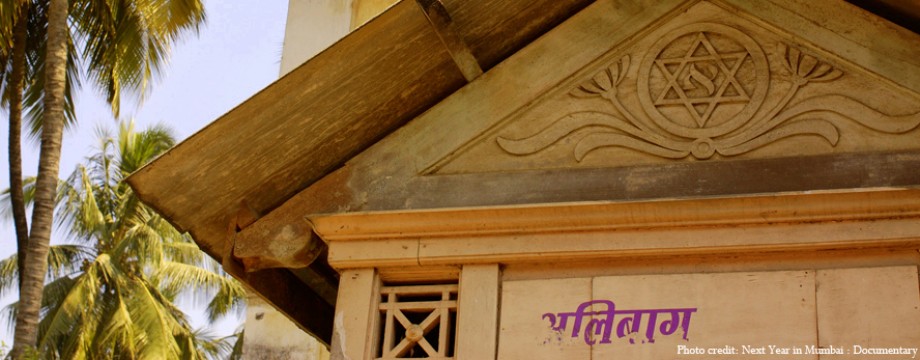Headstones of old Jewish graves smashed, remains disinterred, thrown into river in town of Panvel, where few dozen Jews still live. Majority of community moved to Israel. Yonatan Kandalar, whose grandparents are buried there, shocked to see destruction, disrespect during visit
Yonatan Kandalar’s private heritage trip to the city in which he was born in India turned into a living hell when he arrived at the cemetery where his family and members of the Jewish community are buried. Kandler was shocked to see before his very eyes how the old Jewish cemetery in Panvel had turned into a neighborhood for Muslim families and was destroyed to its very foundations.
One of the headstones had been transformed into a makeshift mosque. Another group of headstones is being used as a urinal and a shower. Dozens of remains had been disinterred and thrown into the nearby river.
“Ever since the visit, I don’t sleep at night,” said Kandalar this week to Ynet. “I imagine a figure that died many years ago standing before me asking for help in the cemetery. We must solve this problem as soon as possible. It doesn’t hurt just the people lying there in the cemetery by desecrating their headstones, but all of Judaism.”
When the Jews left
It started a few decades ago when the community makeup of Panvel started to change after the State of Israel was established. The Indian Jewish community, which was divided into the Bnei Israel community and the Cochin community, gradually started moving to the Jewish state. When Israel was founded, the Jewish community in India numbered 25,000 people.
The city of Panvel was, until then, one of the Jewish centers with many of the city’s streets given Jewish names. In the 50s and 60s, many more Indian Jews made aliyah to Israel and settled in Ramla, Lod, and Ashdod. Today, only 20 Jewish families remain in Panvel.
When the Jews started leaving India in general and Panvel in particular, Muslim families moved into their neighborhoods, and, as it turns out, into their cemeteries as well.
Local Jews find it difficult to indicate an exact time when the invasion of their cemetery began, saying that it was a gradual process. The current building methodology there is simple: A decision is made where to build the new house, the area is “cleaned” of headstones, and, if needed, also of the graves themselves by throwing them into the river.
When Kandalar reached the cemetery together his wife, he tried to contact the local community to speak with them frankly, but the community leader answered him with no uncertainty: “What do you want from us? As long as no one tells us otherwise, we’re here.”
How does the remaining Jewish community respond?
“They are afraid to say anything. They are a minority, after all. A few of them told me about an incident in which they found one of the discarded bodies and wanted to bury it. An argument broke out between the Muslims and the Jews and they called the police. On that day, a few Jews were taken to prison.
“The local government supports this issue. This can be ascertained just from seeing that the houses there are legally connected to the electricity and water grids. I even saw a spigot attached directly to one of the graves there,” explained Kandalar.
“This cemetery is active until this day and people have been buried there at least until last year. My grandfather and grandmother, my uncles and many others from the family are buried there. We want a place that we can visit once a year in order to make pilgrimage to the righteous people of the community and our family who are buried there,” said Kandalar.
The Israeli Consulate in India reported, “After the situation was brought to our attention, we traveled to the village of Panvel in order to examine how we can help. As of now, the cemetery in its entirety is very neglected. The Jewish community claimed that it wishes at this moment to leave the situation as it is because if we were to clean up the area, it will become a juncture for another takeover. The consulate offered its help to the community, but because they are currently in the process of receiving authorization for putting up a fence, they do not need help at this point in time.”
To see the original source and author of this please go to this URL:
http://www.ynetnews.com/articles/0,7340,L-3880181,00.html
